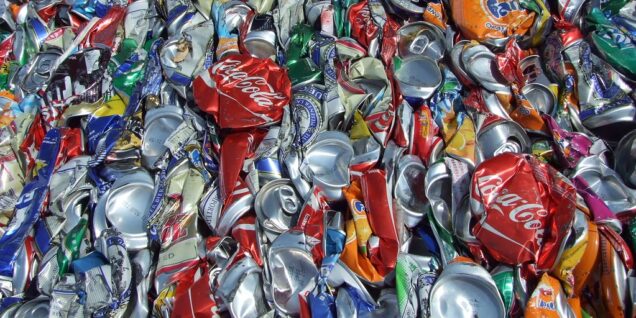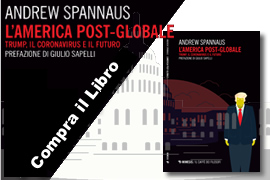In the European Union, pursuing the “ecological transition” that aims to bring the continent to zero emissions by 2050 means issuing new rules for various sectors of the economies of Member States, one of which regards the recycling and reuse of materials such as plastic and aluminum. EU regulations set short and long-term goals, with the aim of facilitating the so-called circular economy in the context of the European Green Deal.
Yet a problem emerges, which regards the EU’s recurring one-size-fits-all approach: seeking to create a standardized model among countries which have different characteristics, which entails the potential of both an increased regulatory burden and the likelihood of economic disruptions which could actually make it harder to reach the overall goals.
A good example of this paradox can be seen in the aluminum sector: Italian operators are stressing that the levels of recycling/reuse indicated by the EU are well below what Italy has already achieved, and furthermore, the new model sought by the institutions in Brussels risks forcing Italy to change the way the sector works, a reorganization that could be costly and time-consuming.
The figures published by CIAL (the Italian National Consortium for Aluminum Packaging) are surprising: 91.6% of aluminum beverage cans are recycled in Italy, as is 73.6% of aluminum packaging overall. In principle, experts in the sector say, aluminum is 100% recyclable, and thus usable to infinity. In fact over 75% of the aluminum produced in the past 125 years is said to still be in circulation. In Italy – according to Giuseppina Carmineo, the General Director of CIAL – by now 100% of aluminum production in the country is based on recycling, making the material an important component of the goal ensure that all packaging is recyclable by 2030.
The problem arises with the new Regulation presented by the European Commission, the “Proposal for a revision of EU legislation on Packaging and Packaging Waste”, published on 30 November 2022. The proposal would set an interim goal of 50% of all aluminum being recycled by 2025, to then increase to 60% by 2030. The overall recycling targets are set by weight of all materials (plastic, wood, glass, and so on), aiming for 70% by the end of 2030.
Given the levels already reached in Italy, the goal could be seen as irrelevant, but for the Italians there are worries about some aspects of the new regulation, such as indications for specific formats; in essence, the goals are distributed across different types of packaging, rather than set in the aggregate. In addition, there is requirement for a deposit system, which Italy does not currently use. Why impose such requirements, they say, if the overall goal can be met with a different model? The European approach may reflect the way the aluminum cycle works in other countries, but there is no need to push everyone towards the same practices if the end result in terms of reducing waste can be reached, or even exceeded, with diverse methods.
The complaint from CIAL and Italian aluminum producers brings to mind the similar method used by the EU on a broader issue, that of financial reform. In the wake of the 2008-2009 financial crisis, there was ample discussion on how to ensure that banks would not face the risk of meltdown as provoked by the rush to invest heavily in real estate during the subprime boom. The approach across the western world as a whole was to increase capital requirements and safeguards so as reduce the leverage banks used to provide credit and make investments. It was understandable, if not sufficient, for large banks that had excessive exposure to speculative markets, but represented a significant burden for smaller banks that were counted on to provide credit to families and SMEs – a cornerstone of economies that rely more on bank credit than equity markets, like that of Italy.
The result was a push for consolidation, and a de facto movement towards standardization in the banking sector, based on the business model of countries characterized more by large international banks, such as France and Germany. It’s a recurring problem, when the EU decides that a common model needs to be developed, and inevitably follows the path already taken by its largest and most influential members.
Perhaps the most interesting aspect of Italy’s success in reaching such a high level of aluminum reuse is that the process has been principally market-driven. The value of the raw material and the nature of aluminum use in Italy – mostly in the Ho.Re.Ca sector – has made it both economically necessary and logistically practicable to collect almost all aluminum cans without dispersion. This bolsters the argument for setting broad goals but not forcing different countries to follow the same system to reach them; what better than for objectives and economic convenience to go together? Yet there remain significant areas where more aluminum could be collected, principally from urban waste. Here, however, the Italians admit that a regulatory-driven approach can be helpful. During an event at the Foreign Press Association in Rome on September 15th, two speakers, the researcher Duccio Bianchi and the businesswoman Roberta Niboli, called for limiting the export of scrap metal outside of Europe, and to China in particular. Producers are keen on maintaining a certain level of economic sovereignty for Europe, including through a further increase of the secondary production of aluminum (i.e. from reuse), in part due to the anticipated growth of demand that will come from the emphasis on renewable energies and electric vehicles in the automotive sector.
– Newsletter Transatlantico N. 27-2023
Subscribe to access all news items






September 25, 2023
Economia, English, Notizie